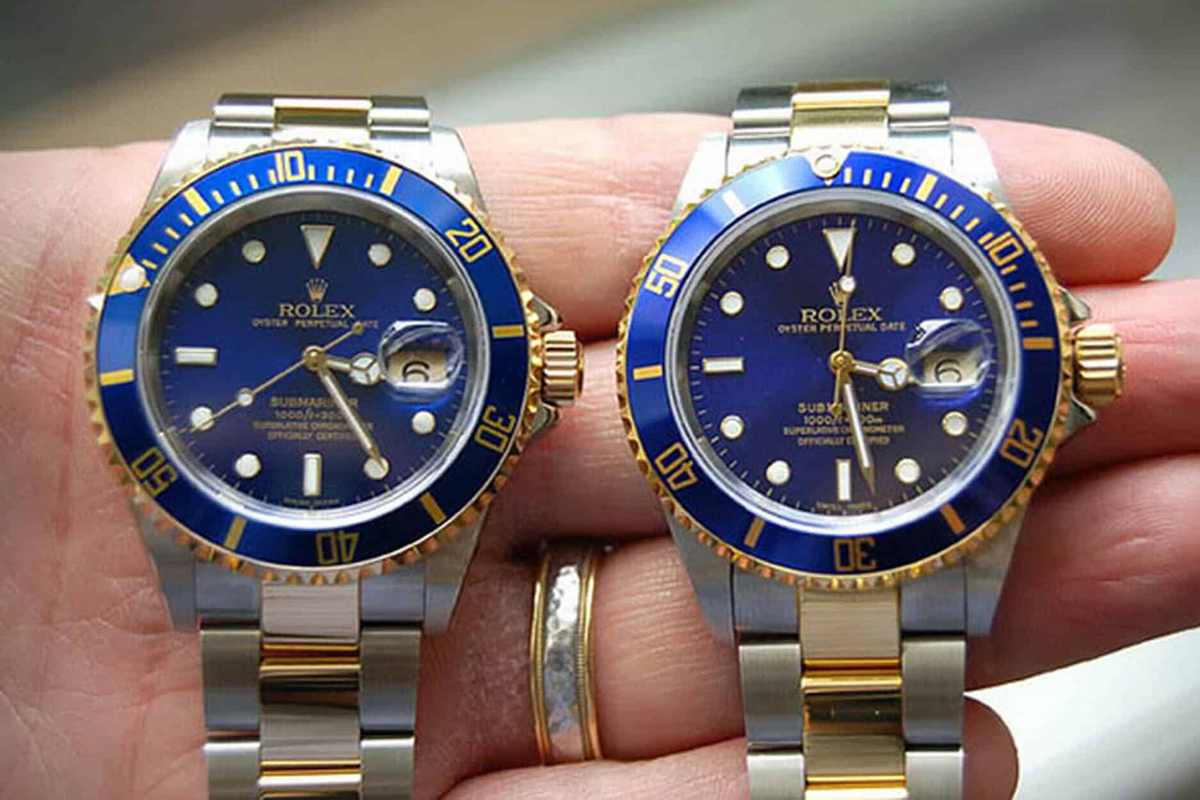Counterfeit goods make up a multi-billion dollar industry. Anything and everything from money, pharmaceuticals, music, film and fashion are copied and sold on the black market. Watches, of course, are not immune from counterfeiters either, and the Federation of Swiss Watches claims they’re the second most counterfeited good behind textiles, and estimate that from as far back as 2012, fake watches have been generating at least $1 billion each year.
You may find a Rolex or a Breitling or any other luxury brand’s timepieces being sold on what’s known as the ‘grey’ market. Watches sold here are usually the real deal, but they’re not sold to you by an authorised dealer. They may be used or could have been sold to the dealer from an authorised retailer, and then passed on to you. You probably won’t get the original box or paperwork, but you will have a genuine article.
Rolex is widely perceived to be the brand most susceptible to counterfeiting, largely due to its desirability among watch enthusiasts and wannabe enthusiasts alike, not to mention its global brand awareness. The counterfeiting of Rolex watches has become so common that the term ‘Fauxlex’ has been coined.
As Forbes points out, the real vs fake watch industry in a vicious cycle: brands spend money on marketing to increase brand awareness and sales, they become more popular with the wider community and more desirable, and therefore become more susceptible to being imitated.
Counterfeit watches – and all counterfeit goods for that matter – could one day be put to a stop however thanks to a new technology developed by researchers at the University of South Australia. Research fellow Dr Nicolas Riesen –lead author of the paper “Ultra-high-resolution fluorescence images in thin phosphor films” – found that “exposing certain inorganic nanocrystals to ultraviolet (UV) light will activate the nanocrystals, essentially turning on their fluorescent properties.”
“When those nanocrystals are exposed to blue light, the regions that have been activated by the UV light will emit red fluorescent light.”
Dr Riesen reasons that small images could be placed on items most likely to be replicated – he initially suggests banknotes or medical packaging – that are difficult to forge. Suspicious items could then be exposed to UV light at customs, for example, and the small images would emit red light to prove they are genuine. It’s not a costly procedure either, as Dr Riesen adds, “Expensive chemicals are not required to make the nanocrystals, rather the difficulty comes in their application.”
The cost would come in paying specialised workers to apply the nanocrystals to whatever the item may be. And because it’s such an intricate process, it makes it harder to forge.
The good news is Dr Riesen confirms the technology can be applied “on different consumer products”. We reached out to him to ask if he believed this could include luxury watches. The good news is, yes, it definitely could.
“There are a few trade secrets behind synthesising the nanocrystals for them to be efficient at emitting fluorescence, and this would take years for someone to successfully replicate. This would make it an ideal anti-counterfeiting measure for the luxury watch market.”
And for any doubters out there who think the small images could be forged by some master counterfeiters, Dr Riesen adds,
“There are also tricks that can be played with tweaking the fluorescence signature that add a further layer of complexity that is so specialised that the prospects of forgery are vanishingly improbable.”
With the number of fake watches being produced each year, it would definitely take some time to put an end to the fake watch market, although realistically bringing it to a complete stop is unlikely, but it could certainly deter a large number of forgers out there, meaning you’re less likely to get ripped off when buying a new timepiece.
